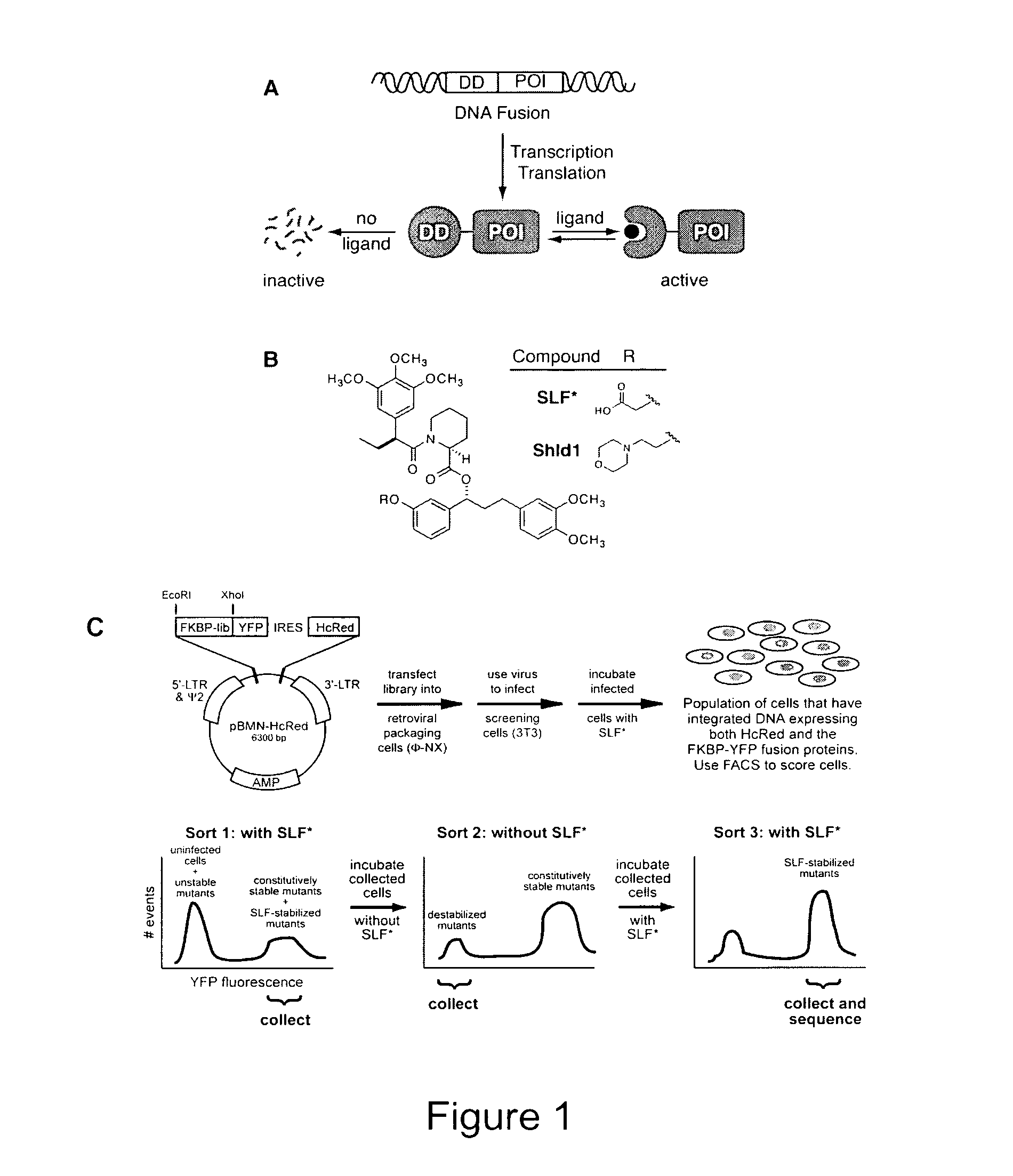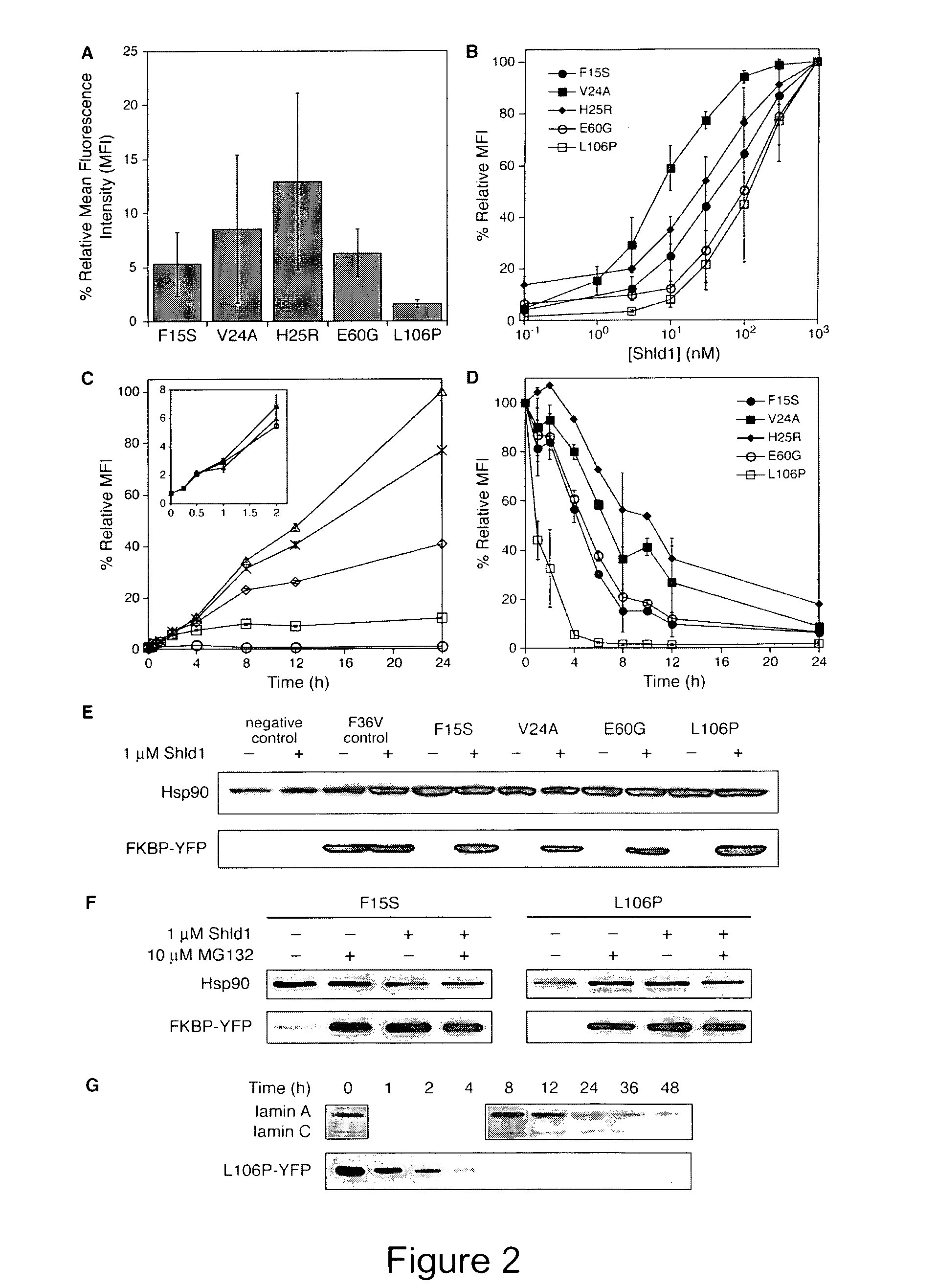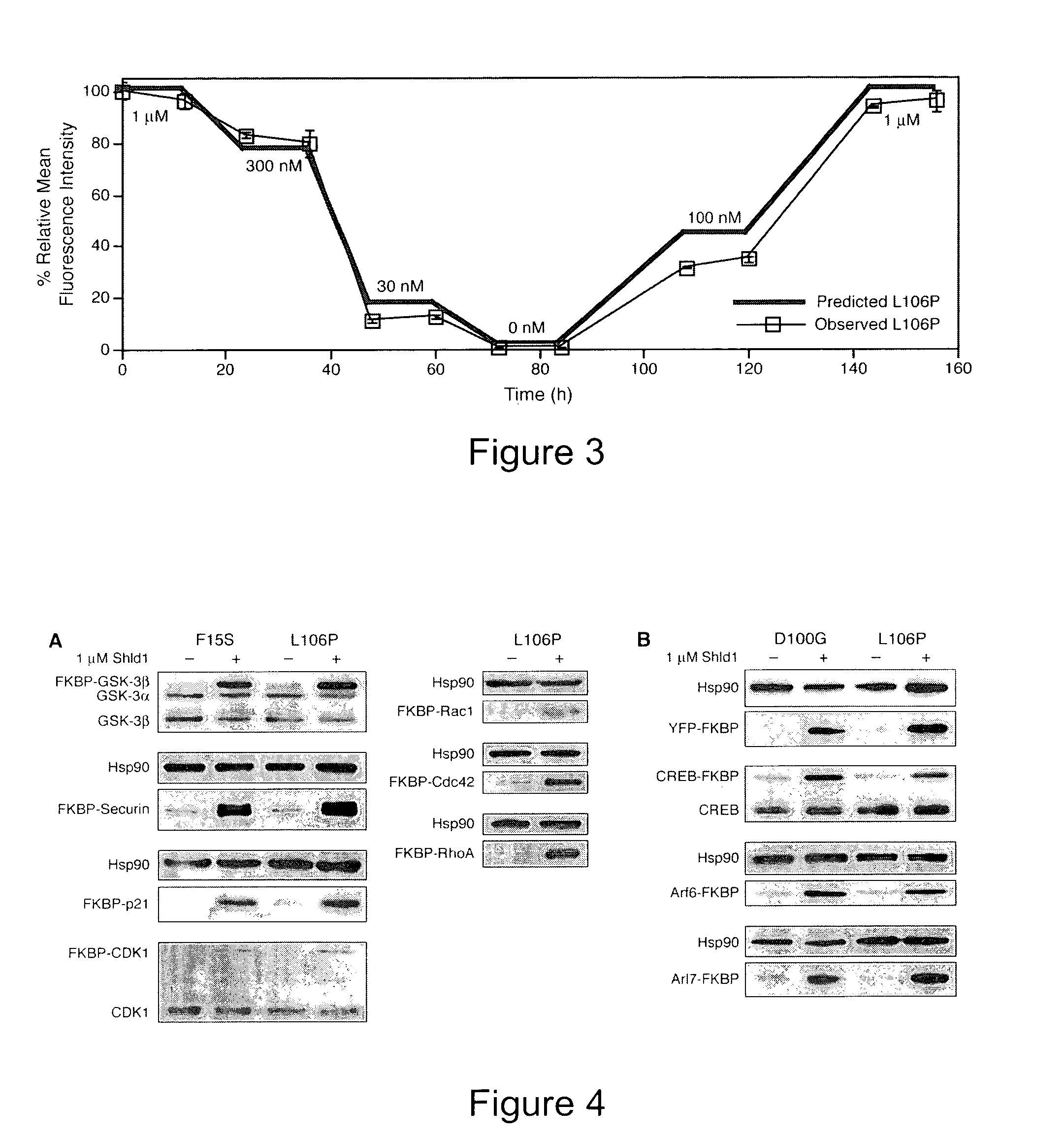Method for regulating protein function in cells using synthetic small molecules
a small molecule and protein technology, applied in the direction of peptide/protein ingredients, peptides, immunoglobulins, etc., can solve the problems of limited methods for regulating protein function directly, atpases and gtpases, etc., and achieve the effect of modulating the stability of fusion proteins
- Summary
- Abstract
- Description
- Claims
- Application Information
AI Technical Summary
Benefits of technology
Problems solved by technology
Method used
Image
Examples
example 1
[0197]Diversity in the FKBP sequence was generated using a combination of error-prone PCR and nucleotide analog mutagenesis. Primers for mutagenic PCR were designed to anneal upstream of the 5′ restriction site to be used for cloning the mutagenesis products into the pBMN iHcRed-tandem retroviral expression vector and downstream of the 3′ restriction site. Three independent condition sets were used to generate diversity. Condition set “A” utilized 4 ng template, 0.5 μM of each oligonucleotide primer, 5 units Taq polymerase, 5 mM MgCl2, 0.2 mM MnCl2, 0.4 mM dNTPs in equal ratio and an excess of 0.2 mM dATP and dCTP. Condition set “B” was identical to A except that dGTP and dTTP were present in excess. Condition set C utilized the non-natural nucleotides 8-oxo-dGTP and dPTP to encourage nucleotide misincorporation (Zaccolo et al., 1996). The FKBP libraries were pooled and ligated into the pBMN iHcRed-t retroviral expression vector, affording a library containing...
example 2
FKBP Synthetic Ligands
[0198]SLF* and Shield1 were synthesized essentially as described (Holt et al., 1993; Yang et al., 2000).
example 3
Cell Culture, Transfections, and Transductions
[0199]The NIH3T3 cell line was cultured in DMEM supplemented with 10% heat-inactivated donor bovine serum (Invitrogen), 2 mM glutamine, 100 U / ml penicillin and 100 μg / ml streptomycin. All other cell lines were cultured with 10% heat-inactivated fetal bovine serum (Invitrogen), 2 mM glutamine, 100 U / ml penicillin and 100 μg / ml streptomycin.
[0200]The ΦNX ecotropic packaging cell line was transfected using standard Lipofectamine 2000 protocols. Viral supernatants were harvested 48 hrs post-transfection, filtered and concentrated 10-fold using an Amicon Ultra centrifugal filter device (Millipore, 100-kDa cut-off). NIH3T3 cells were incubated with the concentrated retroviral supernatants supplemented with 4 μg / ml polybrene for 4 hrs at 37° C. Cells were washed once with PBS and cultured in growth media for 24-36 hrs to allow for viral integration, then assayed as described.
[0201]HeLa cells were plated at 7×104 cells per well of a 24-well plat...
PUM
| Property | Measurement | Unit |
|---|---|---|
| stability | aaaaa | aaaaa |
| cell-permeable | aaaaa | aaaaa |
| temperature | aaaaa | aaaaa |
Abstract
Description
Claims
Application Information
 Login to View More
Login to View More - R&D
- Intellectual Property
- Life Sciences
- Materials
- Tech Scout
- Unparalleled Data Quality
- Higher Quality Content
- 60% Fewer Hallucinations
Browse by: Latest US Patents, China's latest patents, Technical Efficacy Thesaurus, Application Domain, Technology Topic, Popular Technical Reports.
© 2025 PatSnap. All rights reserved.Legal|Privacy policy|Modern Slavery Act Transparency Statement|Sitemap|About US| Contact US: help@patsnap.com



